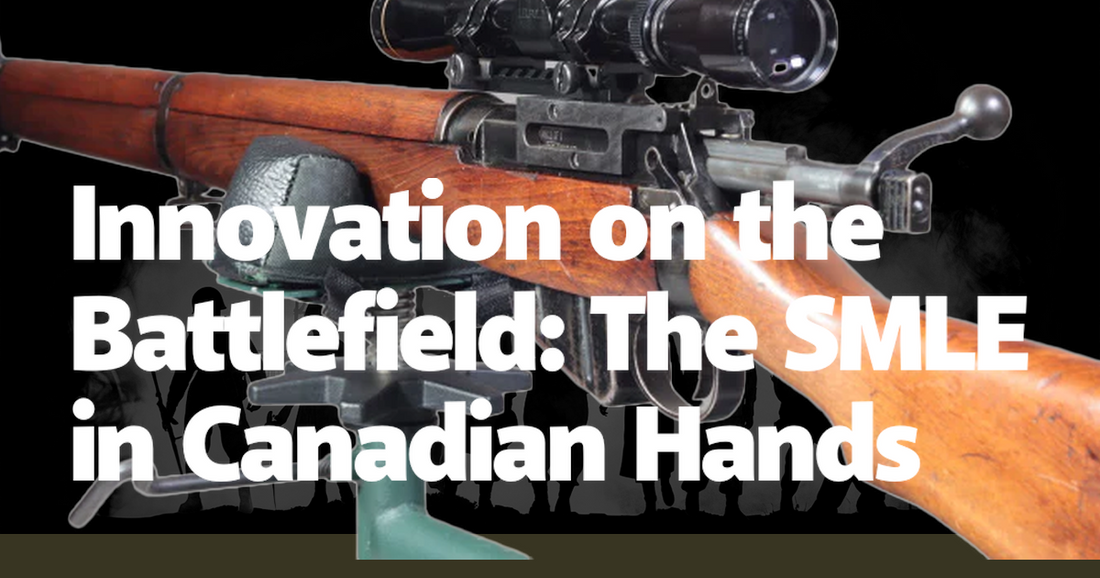In the annals of military history, certain weapons become synonymous with the nations that wield them. For Canada in the early 20th century, that weapon was the Short Magazine Lee-Enfield (SMLE) rifle. The SMLE, often referred to simply as the Lee-Enfield, was a bolt-action rifle that became the backbone of the Canadian infantry during World War I and World War II. Its design, reliability, and effectiveness in combat were not only a testament to British engineering but also to the resilience and adaptability of the Canadian soldiers who carried it into battle. The SMLE’s presence on the battlefield was transformative, providing Canadian troops with a tool that was as innovative as it was dependable.
The SMLE's innovation lay in its design. Unlike many rifles of its era, the SMLE was equipped with a ten-round magazine, which was double the capacity of most contemporary rifles. This allowed Canadian soldiers to maintain a higher rate of fire during engagements. The rifle's bolt-action mechanism was also remarkably smooth and swift, enabling rapid reloading and firing. In the hands of a well-trained soldier, the SMLE could deliver an impressive volume of fire, creating a significant tactical advantage. This was particularly evident during the brutal trench warfare of World War I, where the ability to lay down sustained, accurate fire could mean the difference between life and death.
Canadian soldiers quickly adapted to the SMLE, making it an integral part of their combat strategy. Anecdotes from the trenches reveal how Canadian troops would often engage in 'mad minute' drills, where they would attempt to fire as many rounds as possible within a sixty-second window. These drills honed their shooting skills and ensured that they could maximize the SMLE’s potential in the heat of battle. During the Battle of Vimy Ridge in 1917, Canadian forces demonstrated the effectiveness of their training and the SMLE. The rifle’s rapid-fire capability allowed them to suppress German positions effectively, contributing to one of the most significant victories for the Canadian Corps during the war.
The SMLE was more than just a weapon; it became a symbol of Canadian ingenuity and perseverance. The rifle's robust construction meant it could withstand the harsh conditions of the Western Front. Mud, rain, and even the freezing cold of winter could not easily disable the SMLE, which continued to function reliably where other weapons might fail. Canadian soldiers often personalized their rifles, carving names, dates, and even brief messages into the wooden stocks. These modifications turned each SMLE into a unique artifact, a testament to the individual soldier’s experience and a piece of Canadian military heritage.
World War II saw the continued use of the SMLE by Canadian forces, albeit with some modifications and improvements. The No. 4 Mk I variant of the SMLE, introduced in the late 1930s, featured a simplified design that was easier to produce and maintain. This version retained the core attributes that made the SMLE so effective – its accuracy, reliability, and rapid rate of fire. Canadian troops carried the No. 4 Mk I through the Italian Campaign, the D-Day landings, and the push into Germany, proving once again the rifle’s enduring value on the battlefield. The SMLE’s performance during these conflicts solidified its reputation as one of the premier infantry rifles of the era.
The legacy of the SMLE in Canadian hands extends beyond its battlefield prowess. The rifle played a crucial role in shaping the identity of the Canadian military during a formative period in its history. The experiences of soldiers who carried the SMLE into battle contributed to a growing sense of national pride and military competence. The rifle became a symbol of Canada’s contribution to the Allied war effort and a reminder of the sacrifices made by Canadian soldiers. Veterans who returned home often spoke of their SMLEs with a mixture of fondness and respect, recognizing the role the rifle played in their survival and success.
In the post-war years, the SMLE continued to serve in various capacities within the Canadian military. It was used for training purposes and remained a part of the reserve arsenal for many years. Additionally, the rifle found a new life in civilian hands, as surplus SMLEs were sold to hunters and shooting enthusiasts across Canada. The rifle’s accuracy and durability made it a popular choice for sport shooting and hunting, ensuring that the legacy of the SMLE would endure long after its military service had ended. Collectors and historians today still seek out these rifles, preserving them as artifacts of Canadian military history.
The story of the SMLE in Canadian hands is one of innovation, adaptation, and resilience. It highlights the importance of reliable and effective weaponry in shaping the outcomes of conflicts and the experiences of those who fight in them. The SMLE was more than just a tool of war; it was a companion to the soldiers who carried it, a symbol of their struggle, and a testament to their skill and determination. As we reflect on the history of the SMLE, we are reminded of the enduring impact of military innovation and the indomitable spirit of the Canadian soldiers who wielded this iconic rifle.

